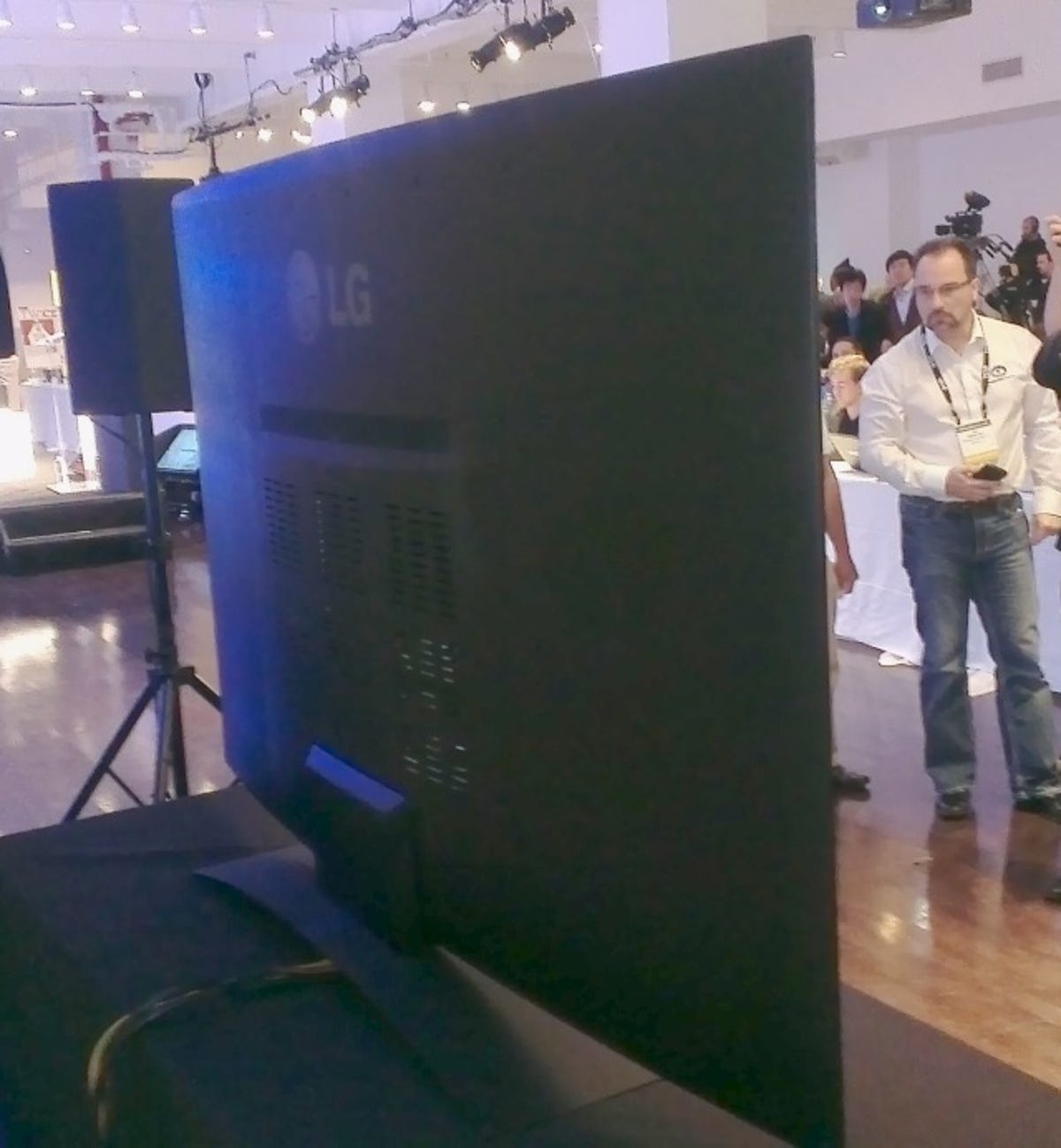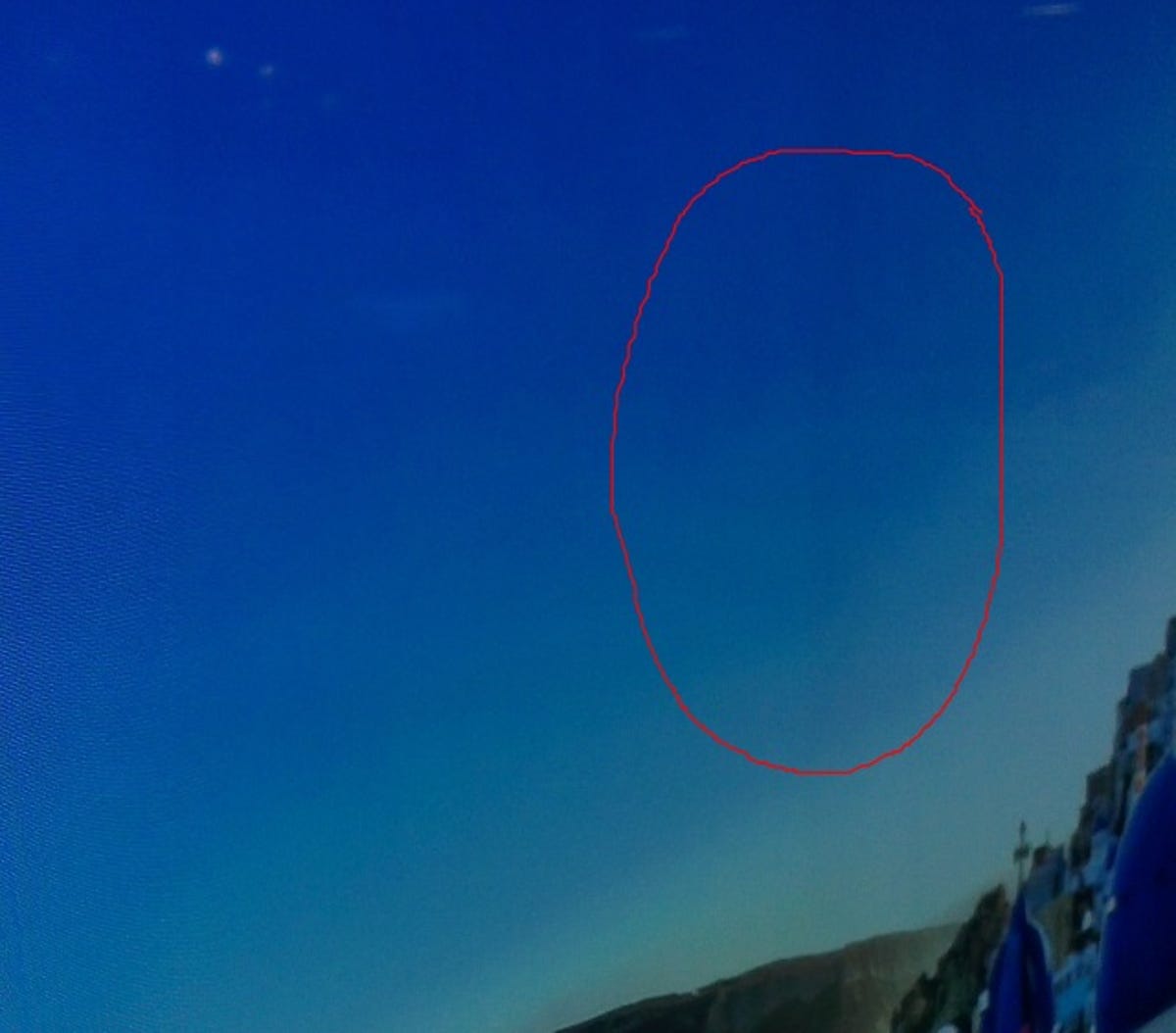LG has revealed the largest 4K OLED TV shown in the United States today, a television featuring a curved 77-inch screen, and won a CES Best of Innovations award.
The LG Ultra High Definition Curved OLED TV was shown at the Consumer Electronics Association’s Ultra HD Conference and was designed to showcase both the new consumer resolution — Ultra HD or “4K” — and the picture quality benefits of OLED technology, such as better color and contrast than LCD.
LG was unable to state whether the model shown today was the same one exhibited at IFA in September, but would only say it was a “technology demonstration.”
Though we’ve yet to formally test the latest batch of OLED panels in the CNET Labs, it is a very impressive technology with excellent black levels, contrast, and color. While on the surface the LG on display today also appeared pretty spectacular, it was a little atypical of the production units we have seen.


Ty Pendlebury/CNET
A closer look at the 77-inch panel suggested this was a “homemade” sample — there was no input panel at the rear for example, and the pixel structure close-up looked irregular in some patches. Some of the pixels looked stuck on a part of the screen in a vertical strip about an inch wide, but whether this was source-related or a problem with the panel (burn-in, for example) it was hard to determine.


Ty Pendlebury/CNET
Ultra HD offers four times as many pixels as 1080p with a resolution of 3,840×2,160, but at the moment there are no format standards and only proprietary devices such as the Sony FMP-X1 4K Ultra HD Media Player and the Redray player.
Last week Netflix announced it would start streaming 4K to customers in 2014, and industry experts at today’s conference agreed that this will be the main method of content delivery for the foreseeable future; until broadcast standards like ATSC 3.0 can be ratified.
Related stories
- What is 4K?
- Price comparison: Every current 4K TV
- Why 4K TVs are a bad idea
- 100GB discs point to 4K Blu-ray
- Sony’s 4K TV media player lands July 15
- HDMI 2.0: What you need to know
- HDMI 2.0 upgrade path: Where do the manufacturers stand?
One of the advantages of 4K is that you can sit closer than a 1080p screen and not see pixels — making this similar to the effect given by an Apple Retina Display. While you’ll need to sit at least 4 feet away from a 55-inch 4K to see the benefits of the extra pixels, at 4 feet from the 77-inch we could still see pixel structure on this screen. This LG would make more sense in a typical living room with an 8-to-10-foot gap to the couch.
Like the other curved panels we have seen, it featured a concave, shiny surface that was only a little more successful at reducing reflections than a flat panel. The curve also meant that when we were quite off-axis part of the panel was actually obscured by the edge of the television.
CNET TV reviewer David Katzmaier suggested — only half-jokingly — that somewhere at Samsung there is probably a team whose sole purpose is to build a 1-inch-bigger, 78-inch 4K OLED for display at CES 2014.
Unfortunately little more is known about this 77-incher as LG was mum on specifications, pricing, or availability.




